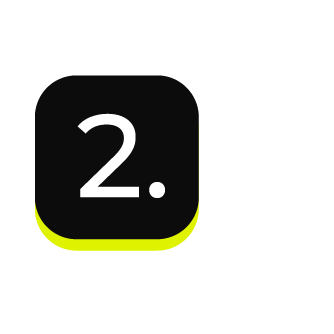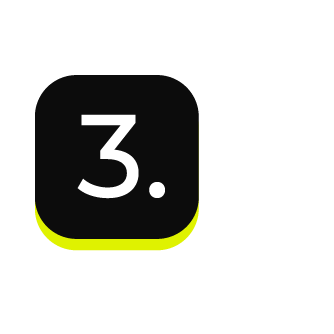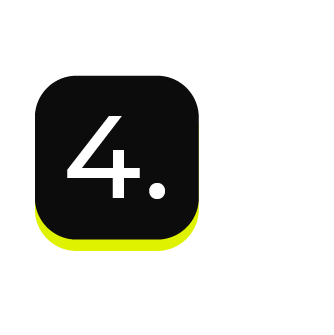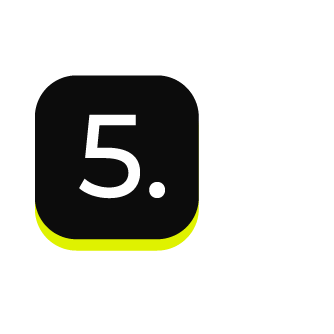Churn propensity model¶
Churn propensity is a predictive model that finds the likelihood that a customer is active based on their purchase history. The churn propensity model outputs a score between 0 and 1 that represents a customer’s probability of returning to make a purchase.
A score closer to 0 indicates a low probability of churn, suggesting the customer is likely to remain active.
A score closer to 1 indicates a high probability of churn, suggesting the customer is at risk of leaving.
Tip
p(return) is a probabilistic score that predicts churn likelihood and represents how likely is it for an individual customer to purchase in the next year.
Amperity calculates this score using various factors, such as the customer’s historical purchase behavior and engagement levels.
Amperity models churn propensity for each customer’s unique purchase history. Some customers are seasonal shoppers, whereas other customers make monthly (or even weekly) purchases. Churn propensity modeling is based on each customer’s individual p(return) score, which helps you build audiences that:
Identify customers who are likely to churn
Provide better insights about the root causes of customer churn to help you determine what will compel them to stay with right-timed messaging and relevant products
Support a churn prevention campaign that contains a series of escalating win-back offers
Optimize suppression and spend
By leveraging churn propensity modeling, you can take a proactive approach to customer retention, reduce churn rates, and improve overall customer satisfaction.
Use cases¶
The churn propensity model helps you build audiences to support churn prevention campaigns, including:
Which customers are likely to spend?¶
The churn propensity model outputs a series of attributes that predict each customer purchase behavior in the coming year, including attributes for:
Average order revenue
Likelihood to spend
Order frequency
Total spend
Attributes that predict a customer’s future purchase behavior are available from the Predicted CLV Attributes table:
Attribute Name |
Description |
|---|---|
Predicted Average Order Revenue Next 365 Days |
A customer’s predicted average order revenue over the next 365 days. |
Predicted CLV Next 365 Days |
The total predicted spend for a customer over the next 365 days. |
Predicted Order Frequency Next 365 Days |
A customer’s predicted number of orders over the next 365 days. |
Predicted Probability of Transaction Next 365 Days |
The probability that a customer will purchase again in the next 365 days. |
Use any combination of these attributes to build audiences that align to various stages within your churn prevention campaigns. You can access these attributes directly from the Segment Editor.
Which customers are likely to churn?¶
The churn propensity model outputs a series of attributes that categorize your customers by:
Predicted lifecycle status, such as active, cooling down, at risk, and lost
Predicted lifetime value, such as top 1%, top 10%, and top 50%
Attributes that predict a customer’s likelihood to churn, along with their predicted lifetime value, are available from the Predicted CLV Attributes table:
Attribute Name |
Description |
|---|---|
Predicted Customer Lifecycle Status |
A probabilistic grouping of a customer’s likelihood to purchase again. For repeat customers, groupings include the following tiers:
By grouping repeat customers into these tiers, you can:
For one-time buyers, groupings include the following tiers:
By segmenting one-time buyers into different tiers, you can:
|
Predicted Customer Lifetime Value (pCLV) Tier |
A percentile grouping of customers by pCLV. Groupings include:
By grouping customers by pCLV percentiles, you can:
|
By combining various customer attributes, you can create highly targeted churn prevention and one-time buyer campaigns that focus on your most valuable customers at the optimal time. You can access these attributes directly from the Segment Editor.
Build a churn propensity model¶
You can build a churn propensity model from the Customer 360 page. Each database that is a “customer 360” database and contains the Merged Customers, Unified Itemized Transactions, and Unified Transactions tables may be configured for predictive modeling. You may use other tables in that database that are unique by Amperity ID to extend predictive models.
Important
The churn, pCLV, and affinity models start with a set of fields from the Merged Customers, Unified Itemized Transactions, and Unified Transactions tables from the database in which the model is built. EPM uses fields from Merged Customers, as well as the custom input tables selected during configuration.
The churn and pCLV models support custom input tables for transactions and transaction items. These tables should have the same field names as Unified Transactions and Unified Itemized Transactions, but can have custom logic, such as filtering or aliasing, depending on the data your brand wants to use to model churn and pCLV.
You may customize predictive models, such as excluding certain types of customers and adding custom features that support your brand’s use cases. Customer exlusions are based off of the Customer Attributes table, and custom features are based off of additional fields that may exist on Unified Itemized Transactions.
You do not need to configure the following fields:
Table |
Fields |
|---|---|
Merged Customers |
Predictive models always use the following fields in the Merged Customers table:
|
Unified Transactions |
Predictive models always use the following fields in the Unified Transactions table:
The following fields, when they are available in the Unified Transactions table, will also be used:
|
Unified Itemized Transactions |
Predictive models always use the following fields in the Unified Itemized Transactions table:
|
To build a churn propensity model

|
Open the Customer 360 page, select a database, and then open the bottom– –menu and select Predictive models. This opens the Predictive models page. |

|
Next to Predicted customer lifetime value (pCLV), click Add model. This opens the Predictive enablement page for churn propensity models. Note Churn propensity and predicted CLV are both outputs of the predicted customer lifetime value (pCLV) model. Fields that support both models are available to queries, segments, and campaigns from the Predicted CLV Attributes table. |

|
Choose the model start date, which is the date from which the pCLV model starts tracking customer purchase behavior. You may choose a calendar date, such as specific date like January 1, 2020 or you may choose a relative date like “today - 4 years”. A model that uses a calendar date will always use data from that date to the present day. Over time the time window used by the model will get longer. A model that uses a relative date will always have a time window with a consistent length. Over time the time window used by the model will stay the same. Note A relative date is determined at the time a model is run, where “now” is the date on which the model is run. The time window should be at least 3 years, but may be 4 or 5, depending on how much data is available to the model in Amperity. |

|
Select the tables from which order-level and item-level data is made available to the model. For order-level data, select Unified Transactions. For item-level data, select Unified Itemized Transactions. |

|
Use the Prediction horizon field to specify the number of days into the future for which you want pCLV modeling. The default value (“365”) is fine for most use cases. |

|
Use the Customer exclusions field to use fields in the Customer Attributes table to identify customers who have purchase patterns that should be excluded from pCLV modeling. For example, use cases for customer exclusions include:
Note The list of fields in the Customer Attributes table that may be used for pCLV modeling are listed in the dropdown. Not all fields in the Customer Attributes table may be used with pCLV modeling. |

|
Use the Additional features field to add more fields from the Unified Transactions and Unified Itemized Transactions tables to the pCLV model. For each additional feature, the model results will include features for “first”, “last”, and “most common”. For example, if Product Category is added, the pCLV model results will include features for First Purchase Product Category, Last Purchase Product Category, and Most Common Product Category. |

|
Click Start validation. |
Use in segments¶
The following table describes the fields that are available when using churn propensity modeling in segments.
Column name |
Data type |
Description |
|---|---|---|
Amperity ID |
String |
The unique identifier assigned to clusters of customer profiles that all represent the same individual. The Amperity ID does not replace primary, foreign, or other unique customer keys, but exists alongside them within unified profiles. Note The Amperity ID is a universally unique identifier (UUID) that is 36 characters spread across five groups separated by hyphens: 8-4-4-4-12. For example: 123e4567-e89b-12d3-a456-426614174000
|
Predicted Average Order Revenue Next 365D |
Decimal |
The predicted average order revenue over the next 365 days. |
Predicted CLV Next 365D |
Decimal |
The total predicted customer spend over the next 365 days. |
Predicted Customer Lifecycle Status |
String |
A probabilistic grouping of a customer’s likelihood to purchase again. For repeat customers, groupings include the following tiers:
For one-time buyers, groupings include the following tiers:
|
Predicted Customer Lifetime Value Tier |
String |
A percentile grouping of customers by predicted CLV. Groupings include:
Note This attribute returns only the customers who belong to the selected value tier. For example, to return all of your top 10% customers, you must choose platinum, gold, and silver. Silver by itself will return 5% of your customers, specifically those are in your 5-10%. |
Predicted Order Frequency Next 365D |
Decimal |
The predicted number of orders over the next 365 days. |
Predicted Probability Of Transaction Next 365D |
Decimal |
The probability a customer will purchase again in the next 365 days. |
Customize lifecycle status¶
The lifecycle status for the main churn propensity model cannot be customized. However, you can add a custom database table that references the churn propensity model. Use a CASE statement to apply custom durations and names that align to how your brand wants to measure churn prevention lifecycle status.
For example:
1WITH overrides AS (
2 SELECT
3 CASE
4 WHEN DATEDIFF(CURRENT_DATE, latest_order_datetime) <= 346 THEN 'Active'
5 WHEN DATEDIFF(CURRENT_DATE, latest_order_datetime) <= 406 THEN 'Cooling Down'
6 WHEN DATEDIFF(CURRENT_DATE, latest_order_datetime) <= 448 THEN 'At Risk'
7 WHEN DATEDIFF(CURRENT_DATE, latest_order_datetime) <= 508 THEN 'Highly at Risk'
8 WHEN DATEDIFF(CURRENT_DATE, latest_order_datetime) > 508 THEN 'Lost'
9 END AS life_cycle
10 ,latest_order_datetime AS one_and_done_transaction_datetime
11 ,DATEDIFF(CURRENT_DATE, latest_order_datetime) AS days_since_order
12 ,c.amperity_id
13 ,country
14 FROM Merged_Customers c
15 JOIN Transaction_Attributes_Extended tae ON c.amperity_id = tae.amperity_id
16 WHERE one_and_done
17)
18
19SELECT
20 p.amperity_id
21 ,p.predicted_probability_of_transaction_next_365d
22 ,p.predicted_order_frequency_next_365d
23 ,p.predicted_average_order_revenue_next_365d
24 ,p.predicted_clv_next_365d
25 ,p.predicted_customer_lifecycle_status
26 ,p.predicted_customer_lifetime_value_tier
27 ,c.life_cycle
28 ,c.one_and_done_transaction_datetime
29 ,c.days_since_order
30 ,c.country
31 ,COALESCE(
32 c.life_cycle
33 ,p.predicted_customer_lifecycle_status
34 ) AS life_cycle_final
35FROM Predicted_CLV_Attributes AS p
36LEFT JOIN overrides c ON p.amperity_id = c.amperity_id